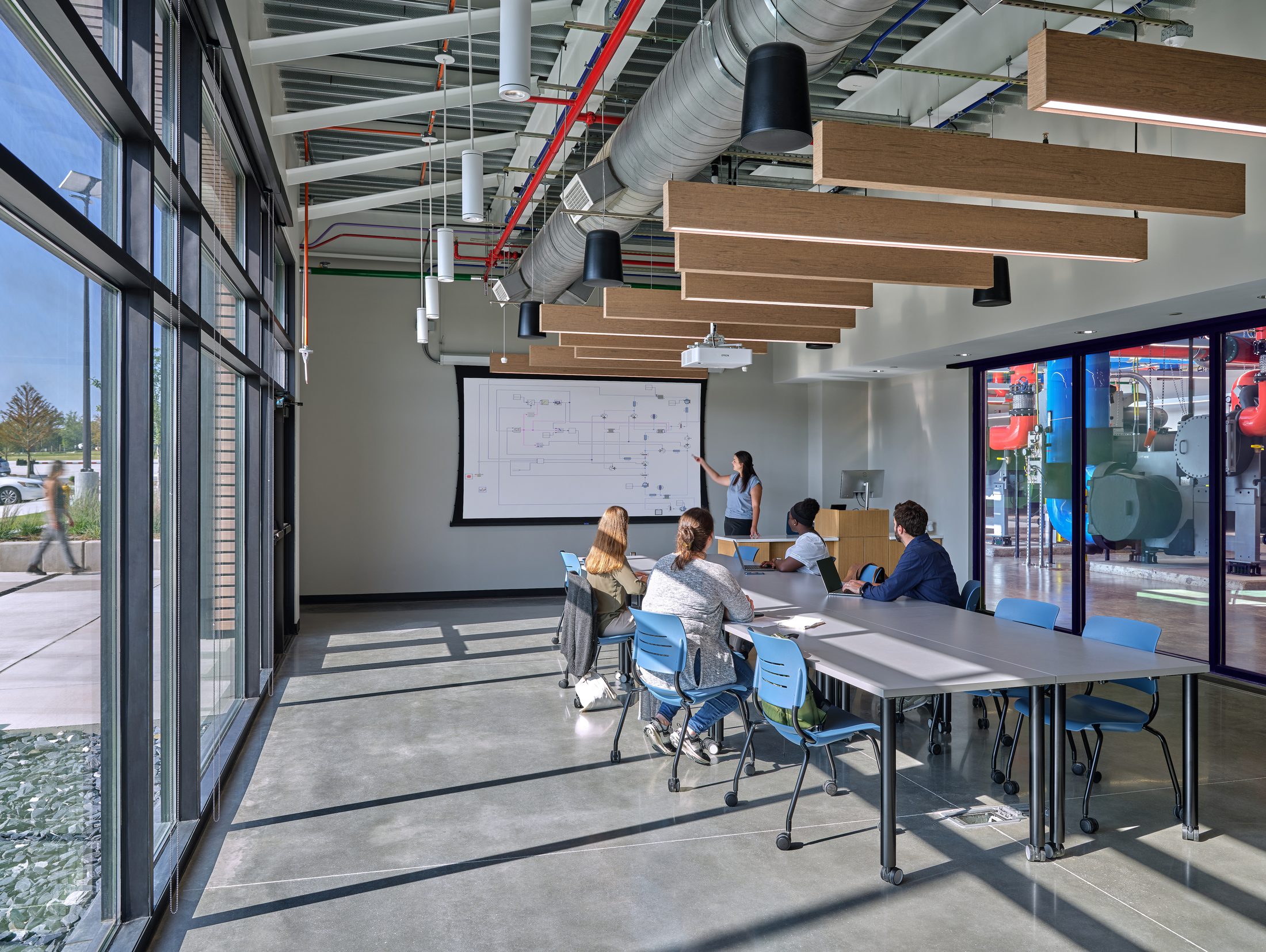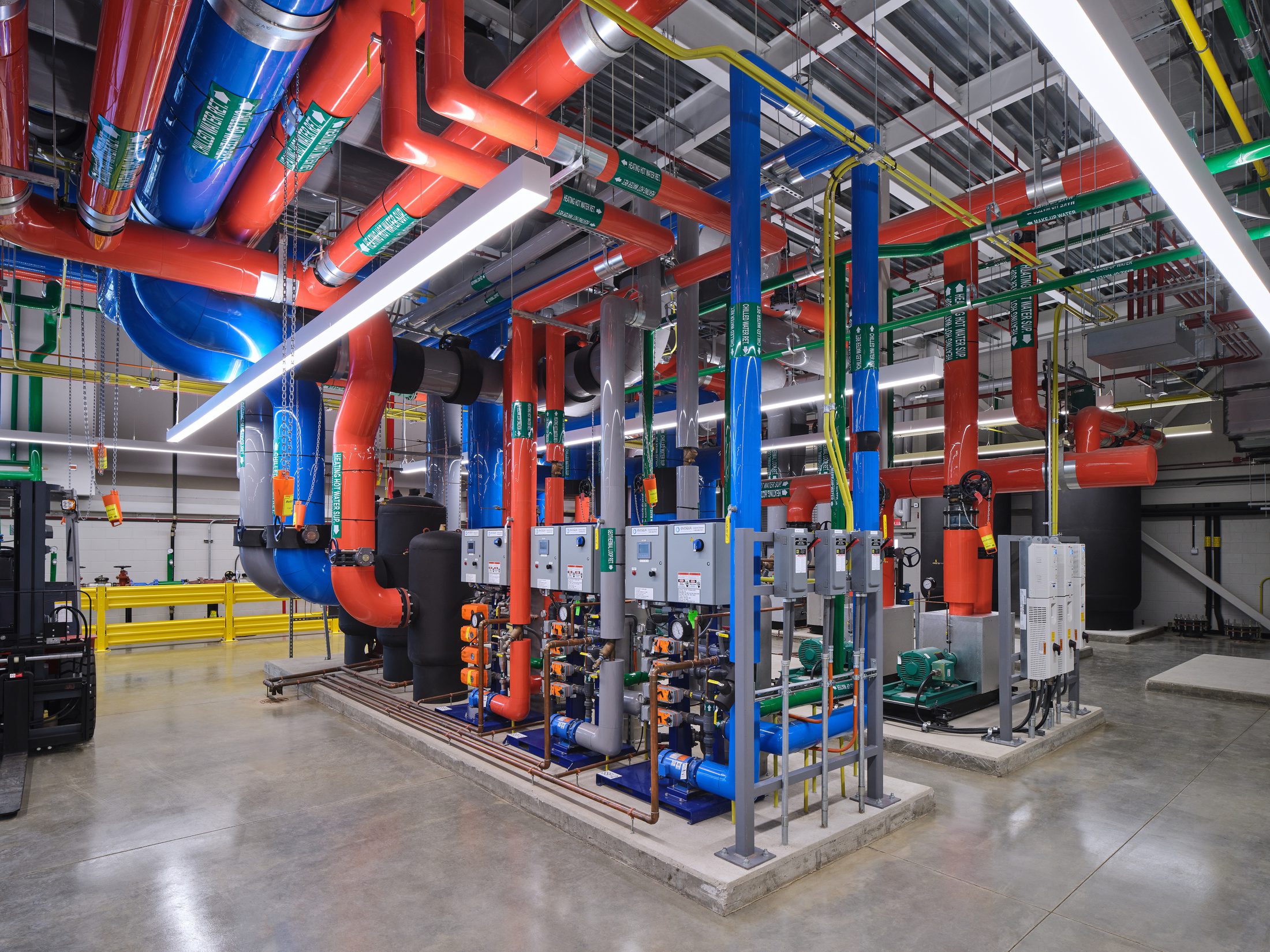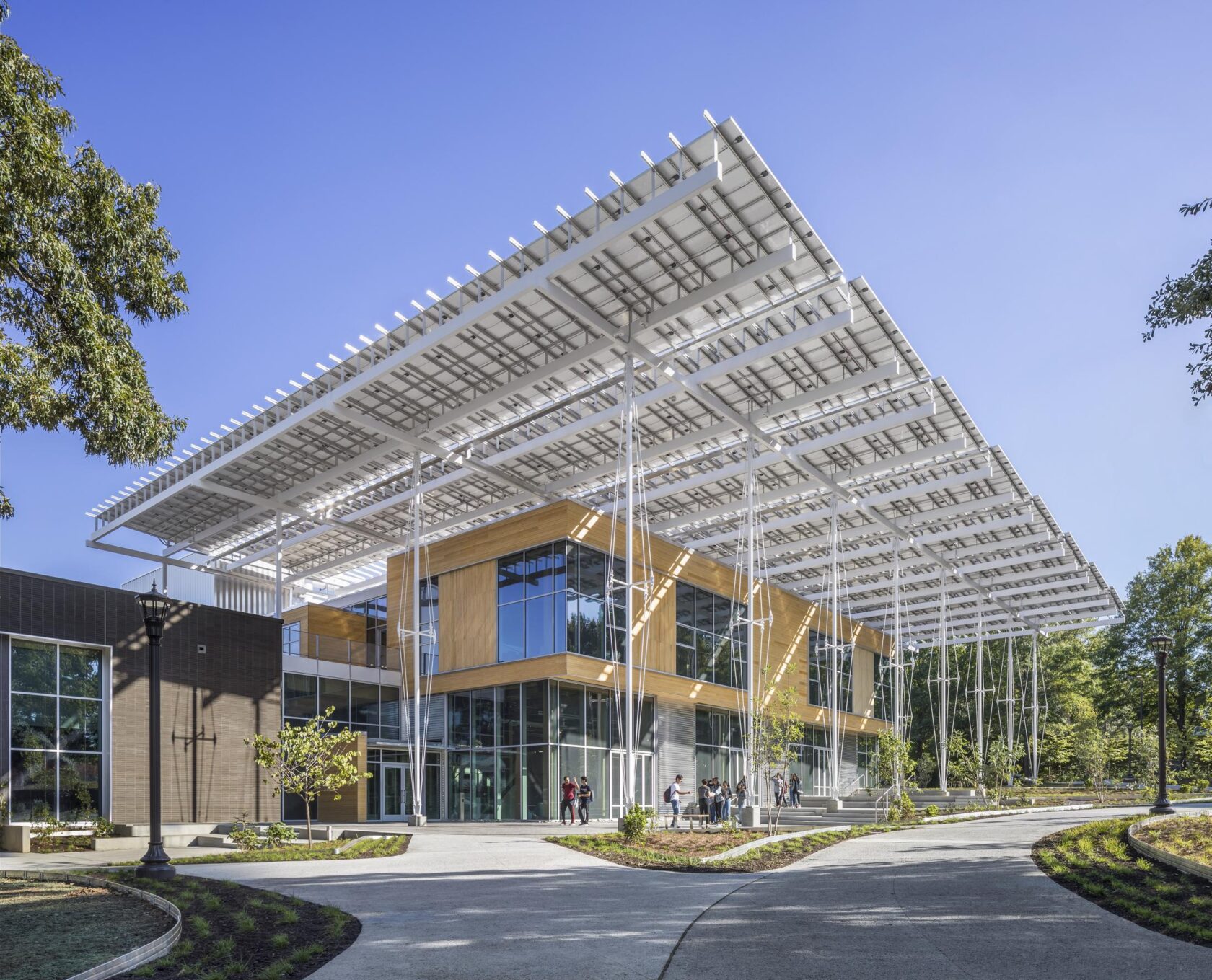News & Insights
An inside look at Wake Tech East’s future-forward campus
The Wake Tech East campus sets a benchmark for how educational institutions can integrate advanced technology like geoexchange into their curriculum and infrastructure.

The Wake Tech East campus, created by Wake Technical Community College, embodies a leap into the future incorporating cutting-edge, sustainable technologies into educational programs. This campus is not just a response to current technological trends but a proactive step to prepare for future needs in workforce development. This new direction is about creating educational programs that build talent capable of excelling in high-tech fields and filling the existing skills gap in advanced technologies.
At the helm of this transformative project is Dr. Scott Ralls, President of Wake Technical Community College. Under his guidance, the Wake Tech East campus just outside of Raleigh, NC was envisioned to significantly enhance the economic landscape and educational capabilities of eastern Wake County. Dr. Ralls emphasizes the strategic intent behind the campus: “It’s more than economic recovery; it’s about leading an economic resurgence.”

A sustainable core: the district energy plant
Salas O’Brien joined the project in the campus masterplanning phase, then as part of the initial campus build-out team team with HH Architecture and construction manager, design-build lead, Skanska.
“Wake Tech and the masterplanning team rallied around the value of a district energy plant for the new campus,” says Bill Smith, a principal in the Raleigh office of Salas O’Brien. “Given the future-forward focus of the college leadership, our team and Wake Tech conceived geoexchange system concepts early in the process. We provided over a dozen different design and operational options from full geoexchange plants to hybrid solutions providing due diligence on each to help the college and design team select the best path forward to meet their long-term goals.”
“Energy modeling is essential to our geosource system planning and design work,” says Jeff Urlaub, executive engineer of the project’s geoexchange design. “Exploring performance profiles of viable energy technology and strategy combinations inform the owner’s basis for decision making.”
The advanced geoexchange system includes 297 closed loop wells, each 500 feet deep, along with approximately 297,000 feet of vertical piping—equivalent to around 56 miles. This system is designed to consume one-third less energy and produce 50% fewer carbon emissions compared to conventional boiler/chiller configurations.
Because the central energy plant (CEP) will be built out in three phases, the system is designed to be expandable and flexible.

Designing for function and training
LeAnn White, principal and the project manager at Salas O’Brien, praised the team’s vision and collaboration. “One of my favorite aspects of this project was the shared commitment to sustainability and training the next generation of leaders who will advance and understand this technology,” she said. In addition to planning and designing the geoexchange borefields, CEP systems, and distribution network, Salas O’Brien contributed expertise in mechanical, electrical, plumbing, and fire protection system designs for the campus.
The 15,700-SF single story facility not only powers the campus but also doubles as a Renewable Energy Training Center, emphasizing sustainability and practical learning through the WakeWorks Apprenticeship program. The spaces were designed not only to power the campus, but also to serve for teaching and training on the systems. HH Architecture provided a vision for transparent teaching classrooms. Oversized spaces, exposed equipment, and safe access pathways are provided to make the building an inspirational learning space for the technology.
“In keeping with the educational goals of the project, the energy plant was designed with a significant portion of the interior wall as glass to allow visibility into the plant from adjacent classroom spaces,” highlights Kevin Cahill, principal and technical director who led the mechanical systems design. “We had to be cognizant of this while we were laying out the equipment and piping such that the views were not obstructed. It required a great deal of coordination, but we were able get everything to fit, be maintainable, and allow great views into the space.”
“Operational personnel shortages in the industry are growing,” says Urlaub. “Wake Tech is creating a smart opportunity in this region.”
White noted that while most of the photovoltaic (PV) systems were installed on the upper roof, out of sight, the team was committed to making PV technology accessible. “We integrated additional PV installations in areas accessible to students, incorporating this into the overall design,” White explains.
One innovation in the project was the selection of all PV powered road lights. “We raised the discussion with the college about the possibility of going 100% PV for the roadway lighting. The school tested it out on a different campus and decided to take that path saving the cost of wiring and electricity when they saw how effective the test was,” says White.
“We had very few construction issues. Skanska did a brilliant job in structuring the process. We didn’t have to value engineer anything. We had a tight, well-coordinated design allowing Wake Tech to achieve all of their project goals without compromises,” adds White.

Impact and recognition: a model for others
The innovative approach of Wake Tech East has not gone unnoticed. “This project has captured so much attention—from other colleges and architects to other engineers. It’s pioneering as the first fully integrated geoexchange plant in our region,” says Smith.
“This project is an example of what can be accomplished with future-forward client leadership that desires a state-of-the-art facility that substantially reduces carbon emissions. By making a small investment up front in the process to study various carbon reducing technologies and design strategies, the project was able to optimize variables such as energy, first cost, life cycle cost, and carbon footprint to provide the best attainable solution for the campus,” says Cahill.
The Wake Tech East central energy plant won the Green Globes 2023 Project of the Year, setting a benchmark for how educational institutions can integrate advanced technology into their curriculum and infrastructure. This project demonstrates the potential of educational facilities to be catalysts for economic growth and innovation and is well aligned with the college’s programs in mechanical engineering, electronics, robotics, biopharmaceuticals, and other fields.
For media inquiries on this article, reach out to Stacy Lake, Director of Corporate Communications

LeAnn White, PE, LEED AP
LeAnn White is a distinguished Principal Mechanical Engineer with a Master of Science and Bachelor of Science in Mechanical Engineering from North Carolina State University. LeAnn has dedicated over 35 years to the consulting engineering field. Since beginning her career straight from college, she has excelled in producing large-scale technical designs for a diverse portfolio of projects. LeAnn serves as a Principal with Salas O’Brien. Contact her at [email protected]

Jeff Urlaub, PE
Jeff Urlaub brings a wealth of experience in campus electrification master planning. His expertise has been instrumental in the design of over 450 geoexchange projects, showcasing his deep knowledge in sustainable campus energy solutions. With a robust portfolio that demonstrates his breadth of knowledge and commitment to innovative sustainable solutions, Jeff continues to lead and inspire in the field of geoexchange engineering. Jeff serves as a Principal with Salas O’Brien. Contact him at [email protected].

Kevin Cahill, PE
Kevin Cahill is a mechanical engineer with specialty expertise in district energy systems, geoexchange and renewable technologies, and decarbonization and sustainability initiatives. He holds a Bachelor of Science in Mechanical Engineering from the University of Notre Dame. Kevin serves as a Principal and Technical Director at Salas O’Brien. Contact him at [email protected].

Bill Smith, PE, LEED AP
Bill Smith has been working in the engineering field for over 35 years. He’s a problem solver by nature and loves finding a solution to a difficult challenge. He works with high-performance campuses and research facilities and helps lead a team of consulting engineers who share his passion. Bill earned his BS in Mechanical Engineering from North Carolina State University, and currently lives in Raleigh with his family. Bill is a Principal with Salas O’Brien. Contact him at [email protected]


